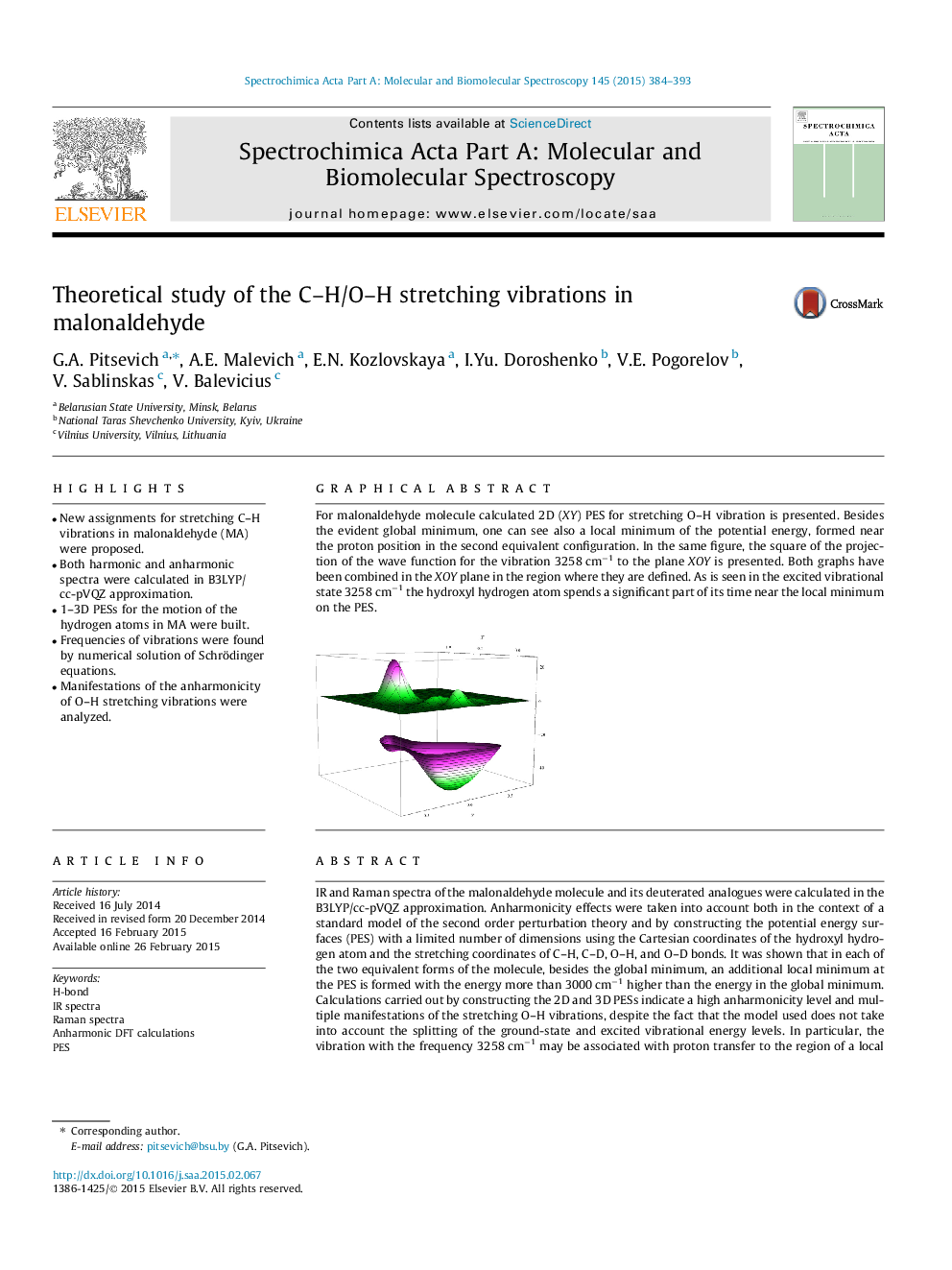| Article ID | Journal | Published Year | Pages | File Type |
|---|---|---|---|---|
| 1228999 | Spectrochimica Acta Part A: Molecular and Biomolecular Spectroscopy | 2015 | 10 Pages |
•New assignments for stretching C–H vibrations in malonaldehyde (MA) were proposed.•Both harmonic and anharmonic spectra were calculated in B3LYP/cc-pVQZ approximation.•1–3D PESs for the motion of the hydrogen atoms in MA were built.•Frequencies of vibrations were found by numerical solution of Schrödinger equations.•Manifestations of the anharmonicity of O–H stretching vibrations were analyzed.
IR and Raman spectra of the malonaldehyde molecule and its deuterated analogues were calculated in the B3LYP/cc-pVQZ approximation. Anharmonicity effects were taken into account both in the context of a standard model of the second order perturbation theory and by constructing the potential energy surfaces (PES) with a limited number of dimensions using the Cartesian coordinates of the hydroxyl hydrogen atom and the stretching coordinates of С–Н, C–D, O–H, and O–D bonds. It was shown that in each of the two equivalent forms of the molecule, besides the global minimum, an additional local minimum at the PES is formed with the energy more than 3000 cm−1 higher than the energy in the global minimum. Calculations carried out by constructing the 2D and 3D PESs indicate a high anharmonicity level and multiple manifestations of the stretching О–Н vibrations, despite the fact that the model used does not take into account the splitting of the ground-state and excited vibrational energy levels. In particular, the vibration with the frequency 3258 cm−1 may be associated with proton transfer to the region of a local minimum of energy. Comparing the results obtained with the experimental data presented in the literature allowed us to propose a new variant of bands assignments in IR and Raman spectra of the molecule in the spectral region 2500–3500 cm−1.
Graphical abstractFor malonaldehyde molecule calculated 2D (XY) PES for stretching O–H vibration is presented. Besides the evident global minimum, one can see also a local minimum of the potential energy, formed near the proton position in the second equivalent configuration. In the same figure, the square of the projection of the wave function for the vibration 3258 cm−1 to the plane XOY is presented. Both graphs have been combined in the XOY plane in the region where they are defined. As is seen in the excited vibrational state 3258 cm−1 the hydroxyl hydrogen atom spends a significant part of its time near the local minimum on the PES.Figure optionsDownload full-size imageDownload as PowerPoint slide
